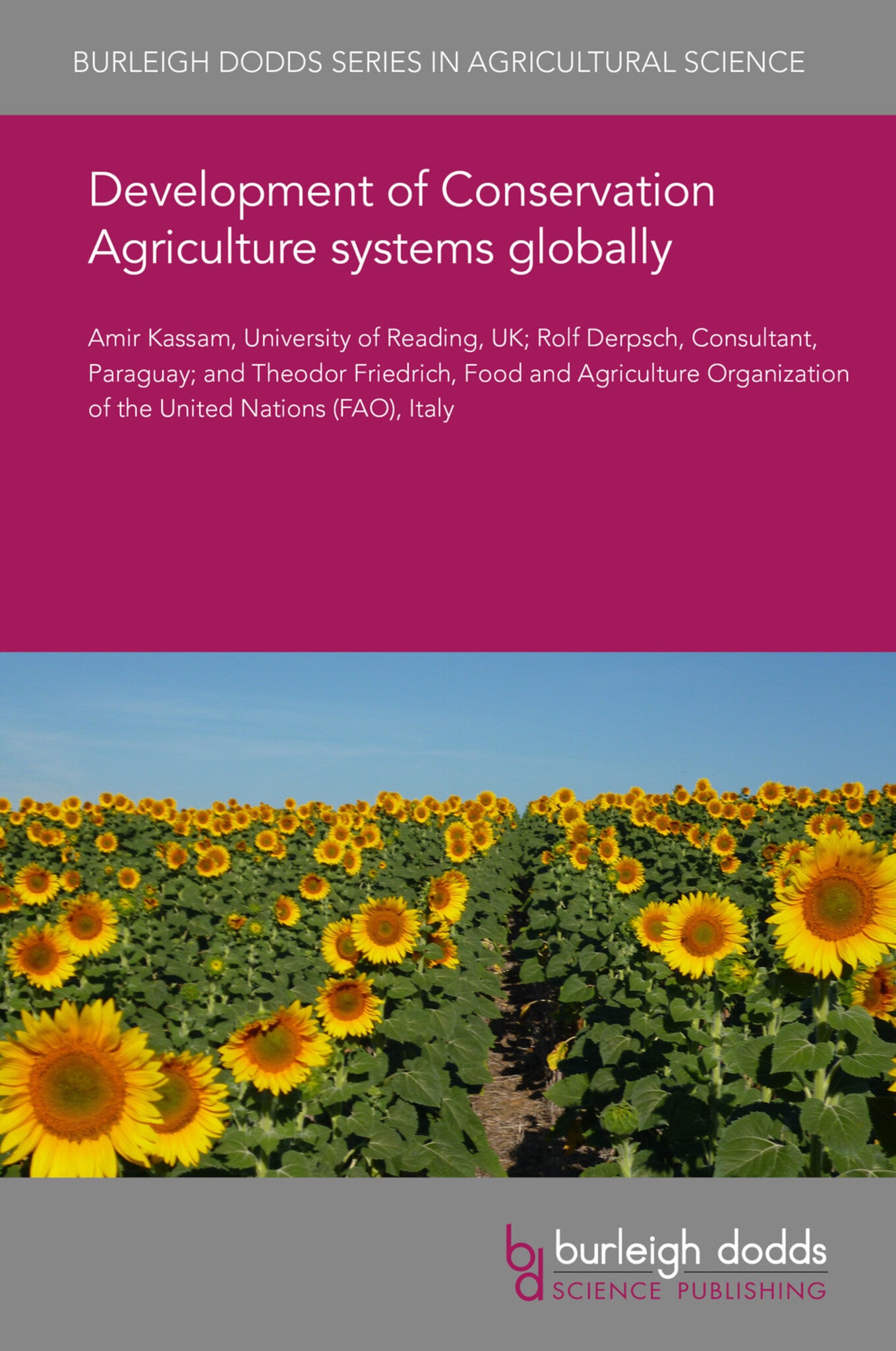We're sorry. An error has occurred
Please cancel or retry.
Development of Conservation Agriculture systems globally
Regular price
£25.00
Sale price
£25.00
Regular price
£0.00
Unit price
/
per
Sale
Sold out
Re-stocking soon
This chapter outlines the development of Conservation Agriculture (CA) system globally in terms of its origins, pioneers and champions, main drivers for its spread, CA systems involved, regional ad...
Read More

Some error occured while loading the Quick View. Please close the Quick View and try reloading the page.
Couldn't load pickup availability
- Format:
-
20 January 2020

This chapter outlines the development of Conservation Agriculture (CA) system globally in terms of its origins, pioneers and champions, main drivers for its spread, CA systems involved, regional adoption, challenges and future prospects. Reducing soil disturbance by tillage began in the USA in the 1930s in response to the devastation caused by mouldboard ploughing and prolonged drought in the mid-west prairies that led to the period known as the ‘dust bowl’. Initially, a number of soil and water conservation practices were developed, including contour ploughing, bunding and terracing. Stubble mulch farming was also developed and this became a forerunner of no-tillage farming which appeared in the 1940s in the USA and led to the term conservation tillage. Realizing that tillage was the root cause of soil erosion and degradation, the term conservation tillage was replaced by the term Conservation Agriculture in 1997 at the meeting of the Latin American Network for Conservation Tillage (Red Latino Americana de Labranza Conservacionista, RELACO), in Morelia, Michoacan, Mexico.

Price: £25.00
Publisher: Burleigh Dodds Science Publishing
Imprint: Burleigh Dodds Science Publishing
Series: Burleigh Dodds Series in Agricultural Science
Publication Date:
20 January 2020
ISBN: 9781786765741
Format: eBook
BISACs:
TECHNOLOGY & ENGINEERING / Agriculture / Sustainable Agriculture, Agronomy and crop production, TECHNOLOGY & ENGINEERING / Agriculture / Agronomy / Crop Science, TECHNOLOGY & ENGINEERING / Agriculture / Organic, Sustainable agriculture, Organic farming

1 Introduction 2 Development of no-till farming and some of the pioneers and champions 3 The modern concept of CA 4 History and adaptability of CA 5 Global adoption and regional spread 6 Conclusion 7 Acronyms 8 Where to look for further information 9 References



